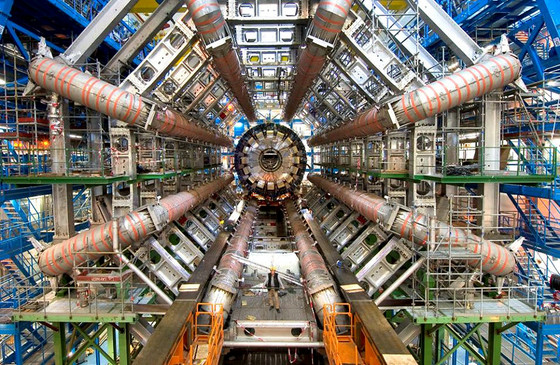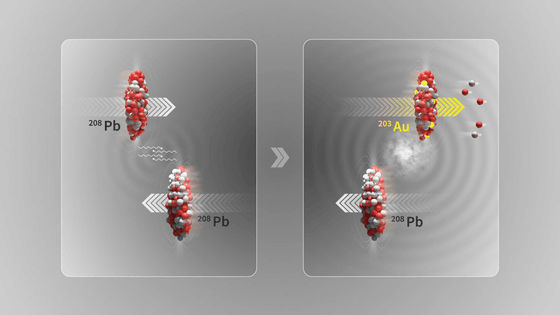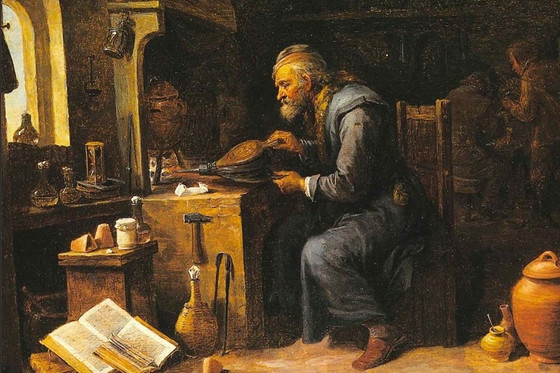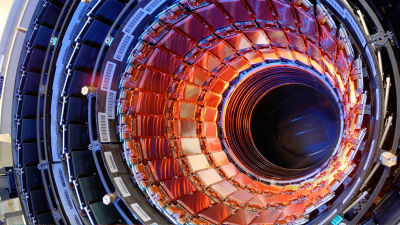Lead-to-gold 'alchemy' observed at CERN's Large Hadron Collider

Proton emission in ultraperipheral Pb-Pb collisions at TeV | Phys. Rev. C
https://journals.aps.org/prc/abstract/10.1103/PhysRevC.111.054906
ALICE detects the conversion of lead into gold at the LHC | CERN
https://www.home.cern/news/news/physics/alice-detects-conversion-lead-gold-lhc
ALICE detects the conversion of lead into gold at the Large Hadron Collider
https://phys.org/news/2025-05-alice-conversion-gold-large-hadron.html
The LHC is a circular particle accelerator with a circumference of 26.7 km, built 100 m underground near Geneva, Switzerland, and began operation in 2008. The LHC accelerates particle beams such as protons and lead ions to 99.999999% of the speed of light and creates extremely high energy states by colliding them with each other.

By
In 2012, a new particle believed to be the Higgs boson was discovered in an experiment at the LHC.
A collection of photos from the scene that clearly show how amazing the discovery of a new particle believed to be the Higgs particle is, with Peter Higgs also appearing - GIGAZINE

ALICE (A Large Ion Collider Experiment), in which this paper was published, is an international collaborative research project focusing on heavy ion collisions, and is one of the major experimental groups being conducted at the LHC. The purpose of the project is to verify quantum chromodynamics , which describes the strong interaction, and to study the breaking of symmetries in matter. Experiments are being conducted to detect and identify various particles using the gigantic ALICE detector, which is 16 meters long and weighs 10,000 tons.
Normally, when atomic nuclei collide head-on, a high-temperature, high-density state known as quark-gluon plasma is created. In this experiment, however, the ALICE team focused on analyzing observational data from 'ultra-peripheral collisions,' a phenomenon in which atomic nuclei pass each other without directly colliding.
The nucleus of 208 Pb, an isotope of lead, contains 82 protons and 126 neutrons, and theoretically, if you remove 3 protons and 2 to 8 neutrons from a 208 Pb nucleus, you can get a gold nucleus.

In a very peripheral collision, a strong electromagnetic field is generated around a fast-moving lead nucleus, which then acts as a pulse of photons on another lead nucleus. This excites vibrations inside the nucleus, causing a process called 'electromagnetic dissociation,' in which a small number of neutrons and protons are ejected from the nucleus. By counting the energy and number of protons released by this electromagnetic dissociation, the experiment proves that gold has been produced.
The ALICE experiment team precisely measured this phenomenon using a special detector called the 'Zero Degree Calorimeter,' and found that the LHC produced up to about 89,000 gold nuclei per second. It also revealed that a total of about 8.6 billion gold nuclei were produced in research projects conducted between 2015 and 2018.
However, the mass of 8.6 billion gold nuclei is only 0.000000000029 grams, so the amount of gold produced is very small. In addition, the gold nuclei produced are released with very high energy and immediately collide with the internal structure of the LHC and are broken down into other particles, so they only exist for a very short time.
Marco van Leeuwen, a spokesman for the ALICE experiment team, emphasized the significance of this research, which allows the same detector to study both large collisions that generate thousands of particles and rare
The research team concludes their paper with the words, 'Although the dreams of medieval alchemists were technically realized, their hopes of wealth were once again dashed.'

Related Posts:
in Science, Free Member, Posted by log1i_yk







